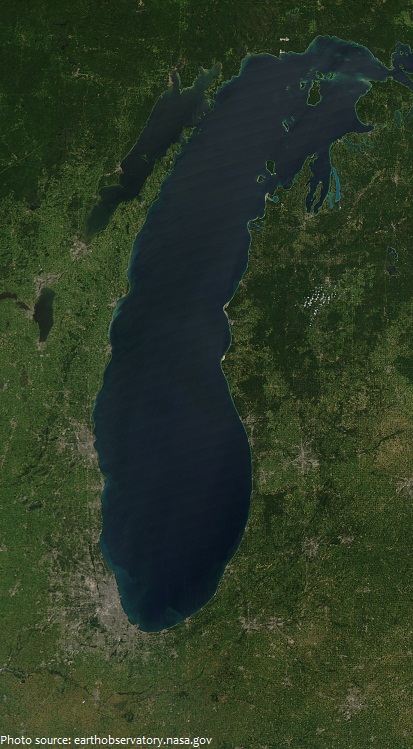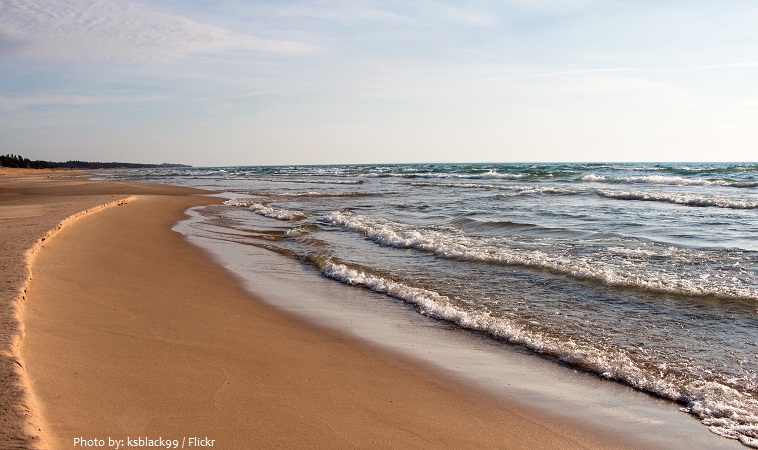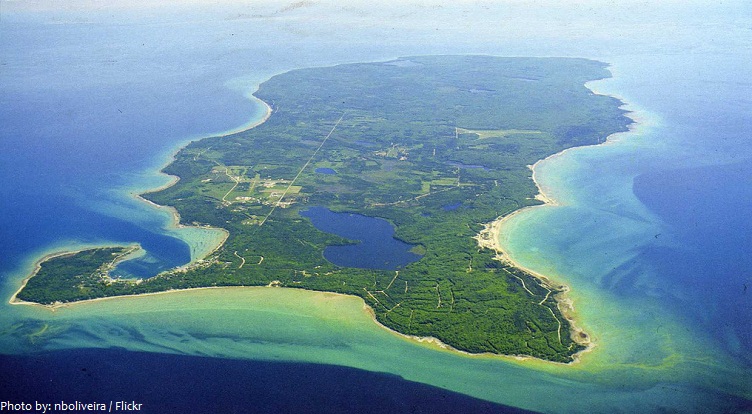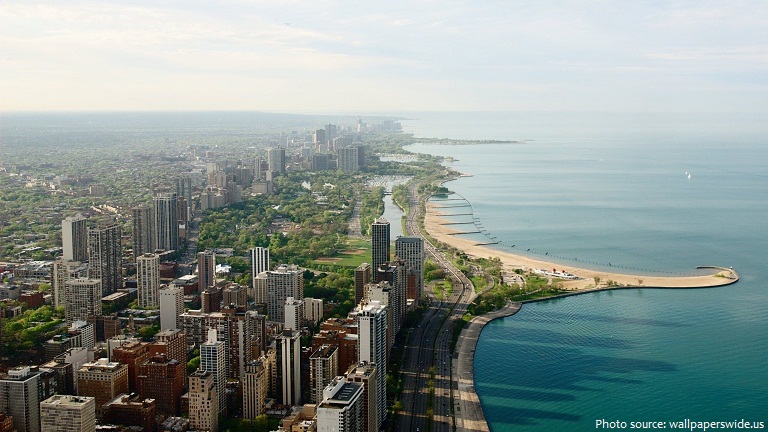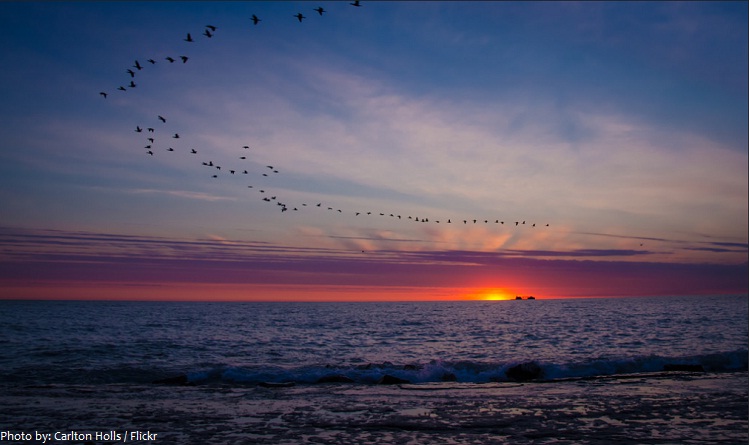Lake Michigan is one of the five Great Lakes of North America and the only one located entirely within the United States. The other four Great Lakes are shared by the U.S. and Canada.
Lake Michigan is the third largest Great Lake by surface area and the sixth largest freshwater lake in the world.
It has a surface area of 58,026 square kilometers (22,404 square miles).
Lake Michigan is the second-largest of the Great Lakes by volume (4,920 cubic kilometers / 1,180 cubic miles).
It is 494 kilometers (307 miles) long by 190 kilometers (118 miles) wide with a shoreline 2,640 kilometers (1,640 miles) long.
The lake’s average depth is 85 meters (279 feet), while its greatest depth is 281 meters (923 feet).
Its surface is 177 meters (581 feet) above sea level.
Lake Michigan is shared, from west to east, by the U.S. states of Wisconsin, Illinois, Indiana, and Michigan.
The northern part of the Lake Michigan watershed is covered with forests, sparsely populated, and economically dependent on natural resources and tourism, while the southern portion is heavily populated with intensive industrial development and rich agricultural areas along the shore.
Lake Michigan has many beaches. The region is often referred to as the “Third Coast” of the United States, after those of the Atlantic Ocean and the Pacific Ocean.
With over 111,000 hectares (275,000 acres) of sand dunes lining the shores of Lake Michigan, Michigan is home to the largest freshwater dune system in the world.
Many rivers and streams flow into Lake Michigan, and the major tributaries are the Fox-Wolf, the Grand and the Kalamazoo.
On the northern end, Lake Michigan and Lake Huron are connected by the Straits of Mackinac, and technically, these two bodies of water are one lake.
Lake Michigan discharges into Lake Huron through the Straits of Mackinac at a rate that allows for a complete change of water about every 100 years.
The Straits of Mackinac were an important Native American and fur trade route.
The northern end of the lake contains all of the islands, the largest of which is Beaver Island [pic. below].
Green Bay in the northwest is its largest bay. Grand Traverse Bay in its northeast is another large bay.
Twelve million people live along Lake Michigan’s shores, mainly in the Chicago [pic. below] and Milwaukee metropolitan areas.
The lake forms a link in a waterway system that reaches east to the Atlantic Ocean through the St. Lawrence Seaway and south through the Chicago River locks, to the Mississippi River and on to the Gulf of Mexico.
Lake Michigan is home to a variety of species of fish and other organisms. Trout, salmon, walleye, and smallmouth bass fisheries are prevalent on the lake. The lake is also home to crawfish, freshwater sponges and sea lamprey, a metallic violet species of eel.
The lake is also home to a wide range of bird populations, including water birds such as ducks, geese and swans, as well as crows, robins and bald eagles. Predatory birds such as hawks and vultures are also prevalent on the lake, due to the wealth of wildlife to feast upon.
Lake Michigan was formed during the last Ice Age as glaciers advanced and then retreated across the region, creating large glacial lakes.
Some of the earliest human inhabitants of the Lake Michigan region were the Hopewell Indians. Their culture declined after 800 AD, and for the next few hundred years, the region was the home of peoples known as the Late Woodland Indians.
The first Europeans to see Lake Michigan were French traders and explorers in the 1600’s. One of which, Samuel de Champlain, who mapped much of northeastern North America, called Lake Michigan the Grand Lac. It was later named “Lake of the Stinking Water” or “Lake of the Puants,” after the people who occupied its shores.
The word “Michigan” was originally used to refer to the lake itself, and is believed to come from the Ojibwa Indian word mishigami, meaning “great water.”
The Petoskey stone, Michigan’s state stone, is composed of a fossilized coral, and the only place in the world it is found is on Lake Michigan beaches in northern Michigan.
Small lunar tidal effects have been documented for Lake Michigan.
The National Park Service maintains the Sleeping Bear Dunes National Lakeshore and Indiana Dunes National Lakeshore.
Two passenger and vehicle ferries operate ferry services on Lake Michigan, both connecting Wisconsin on the western shore with Michigan on the east.
Within Lake Michigan there is a “triangle” with a similar reputation to the Bermuda Triangle, where a large amount of “strange disappearances” have occurred.
Jim Dreyer swam across Lake Michigan in 1998, and then in 2003, he swam the length of Lake Michigan.

